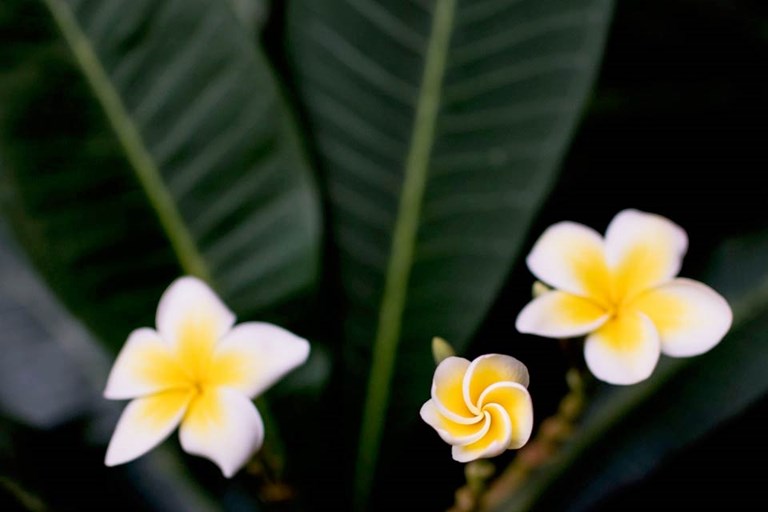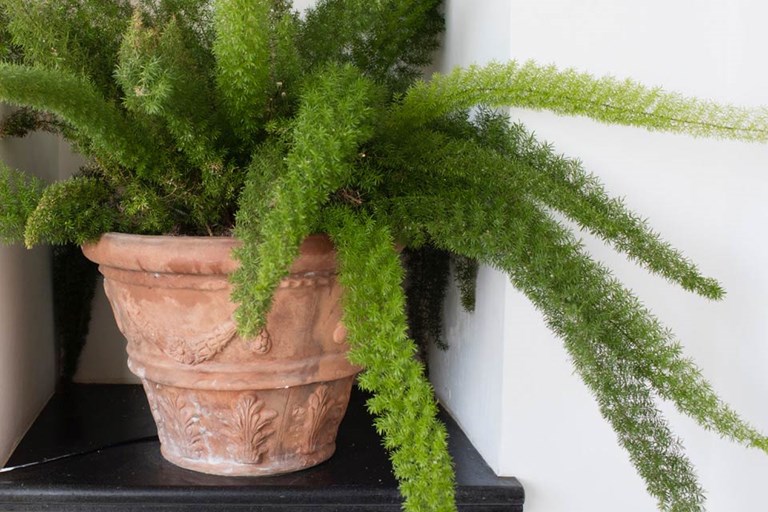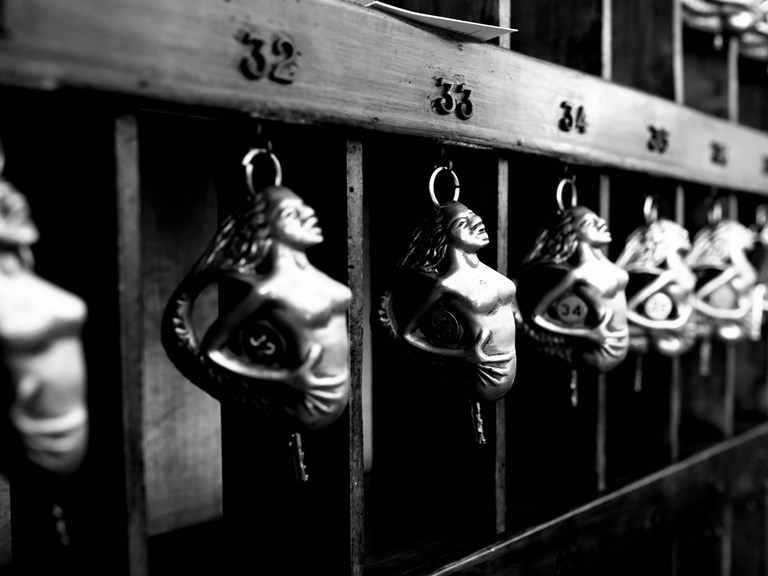LE SIRENUSE’S GREEN WORLD
08.03.2018 LE SIRENUSE
The ancient wisteria plant that drapes its florets above the lane leading down to the church and the beach is reliving its youth once more, scenting the air as it buds, flowers on the cusp of opening. The almond blossom has been out for a while, and now the plum trees are following suit, deep fuchsia buds disclosing cotton-wool puffs of the palest pink. Meanwhile, on steep terraces above the sea, lemons and oranges still glow like secret lanterns under green canopies of leaves and netting – there to protect the fruit against the frosts and winds that can still strike as winter lashes out one last time against the coming warmth.
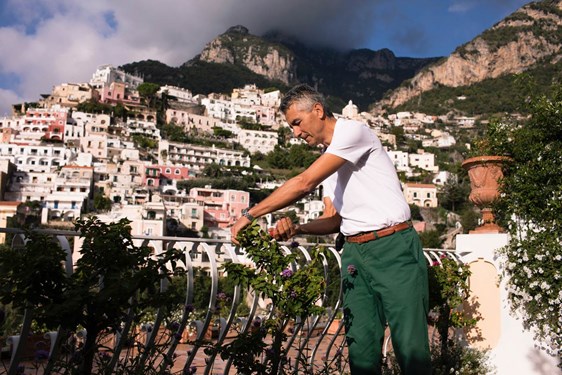
View
Le Sirenuse, which reopens for the 2018 season on 24 March, is no stranger to earth’s reawakening. From the bougainvillea that sends branches and tendrils across the vaulted ceiling of the main La Sponda restaurant dining room to the lemon tree on the lobby terrace, immortalised in so many Instagram posts, plants have been an integral part of this Pompeii-red palazzo’s raison d’être ever since it became the Sersale family’s seaside home in the 1940s. “Oh, and the plants!”, as one appreciative guest wrote recently on a well-known online review site. “You won’t find any better in a botanical garden!”
Though the results may seem effortless, those plants require constant attention. The overall design, botanical masterplan and colour coordination is the responsibility of landscape architect Isabella Casali di Monticelli, who first began working with the late Franco Sersale on the planting scheme at the end of the 1990s. “It’s a family home that gradually became a hotel”, she remarks, “so I wanted to evoke the charm of the garden and terraces of an old Positano house. It has the outline of a little positanese garden with its lemons, roses, agapanthus…”
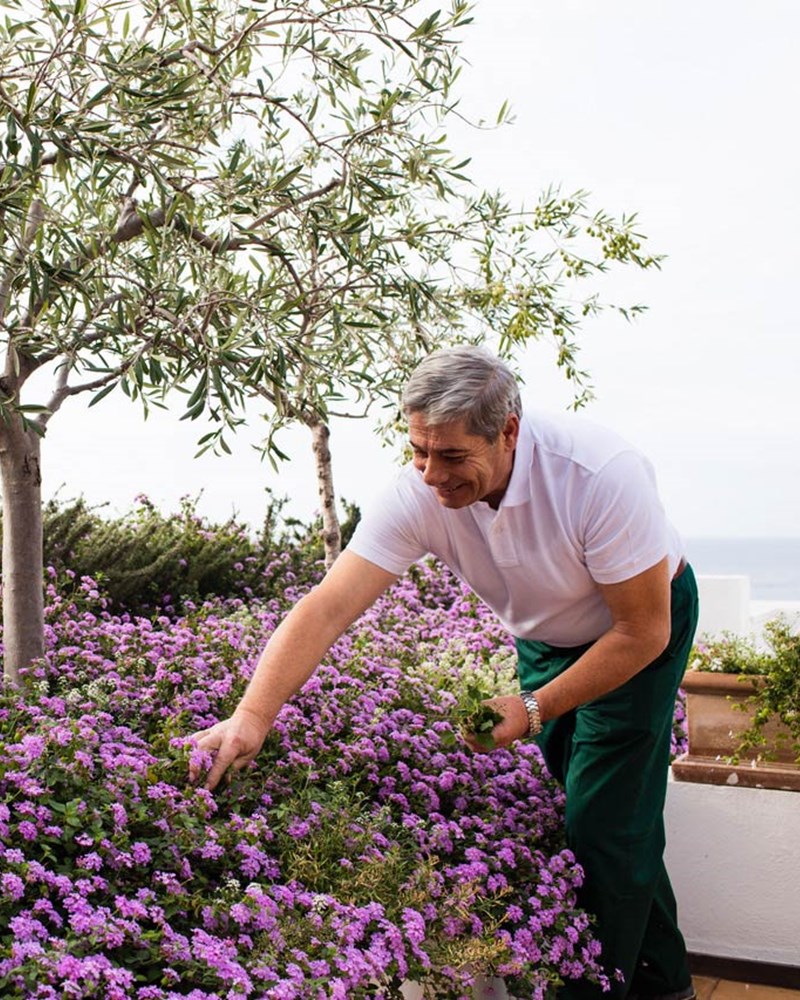
Day to day care of the plants, and the many adjustments that each season brings, falls to a team of gardeners overseen by Giulia Sersale. March is the end of a busy period for Giulia and her main collaborators, Nello and Peppe, as the hotel’s winter closure is when major tasks such as pruning and repotting take place, as well as mulching, where necessary, to protect outside plants against occasional winter frosts.
Le Sirenuse’s garden ‘dream team’ has been even busier than usual this winter. All the lemon trees have been replaced, having suffered the cold, with the new arrivals being planted in handsome terracotta pots made by famed Neapolitan terracotta firm Fratelli Stingo. The Cavendish banana plants in the lobby have also been swapped for healthy new specimens, and two splendid Yucca rostrata palms are due to arrive any day now. Sirenuse guests are often surprised to learn that many of the hotel’s guest rooms become indoor greenhouses during the hotel’s annual closure, hosting plants that normally stand outside but need winter protection from the cold and wind.
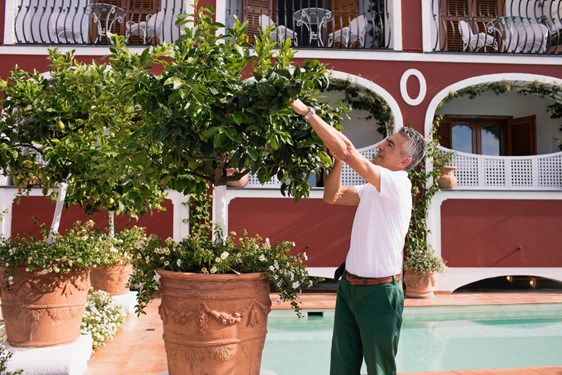
View
Plants and masonry live in delicate symbiosis. A scented Stephanotis floribunda (Madagascar jasmine) climbs the south-facing wall of the Champagne and Oyster bar terrace, talking the heat it needs to thrive not only from the sun but from the stone it rests against, which stays warm to the touch well into the night. Sometimes the plants get the upper hand, and need to be reined in. A few years back, it was discovered that the venerable bougainvillea on the breakfast terrace had sent its roots right down into the walls. In the end, a metal shield was inserted to protect the fabric of the building without harming the plant – a major engineering job.
Certain plants hold associations, some of them to do with family history, others evoking Amalfi Coast folk traditions. The magnificent Nephrolepsis exaltata fern inside the Champagne Bar was placed there by Giulia’s aunt, Anna Sersale, over thirty years ago; today, its green fronds, as thick and unruly as Jimi Hendrix’s hair, are set off by one of the hotel’s art installations - Martin Creed’s neon ceiling work ‘DON’T WORRY’. Giulia believes that one reason for the fern’s longevity is because it “thrives on the classical and lounge music” played in the bar. Another splendid specimen, the Strelitzia nicolai or ‘bird of paradise’ plant at the foot of the stairs that lead onto the Champagne Bar terrace, was a Franco Sersale purchase. Much later, it would provide the inspiration for another Sirenuse Art Projects commission – LA-based artist Alex Israel’s trompe l’oeil mural Amalfi Dr., 2017, which takes this lovely arching tropical plant for a painted walk up the stairs.
Meanwhile, the fragrant lemon verbena or Aloysia citriodora, which head barman Robert Wimmer gathers to garnish certain summer cocktails, has far older associations: called Erba luigina in parts of Italy, in homage to Maria Luisa of Parma, wife of King Charles IV of Spain, it was used by milkmaids as a quick way of removing the tang of the milking shed from their hands on the way to church – they would simply ‘wash’ their hands in clumps of the lemon-scented herb.
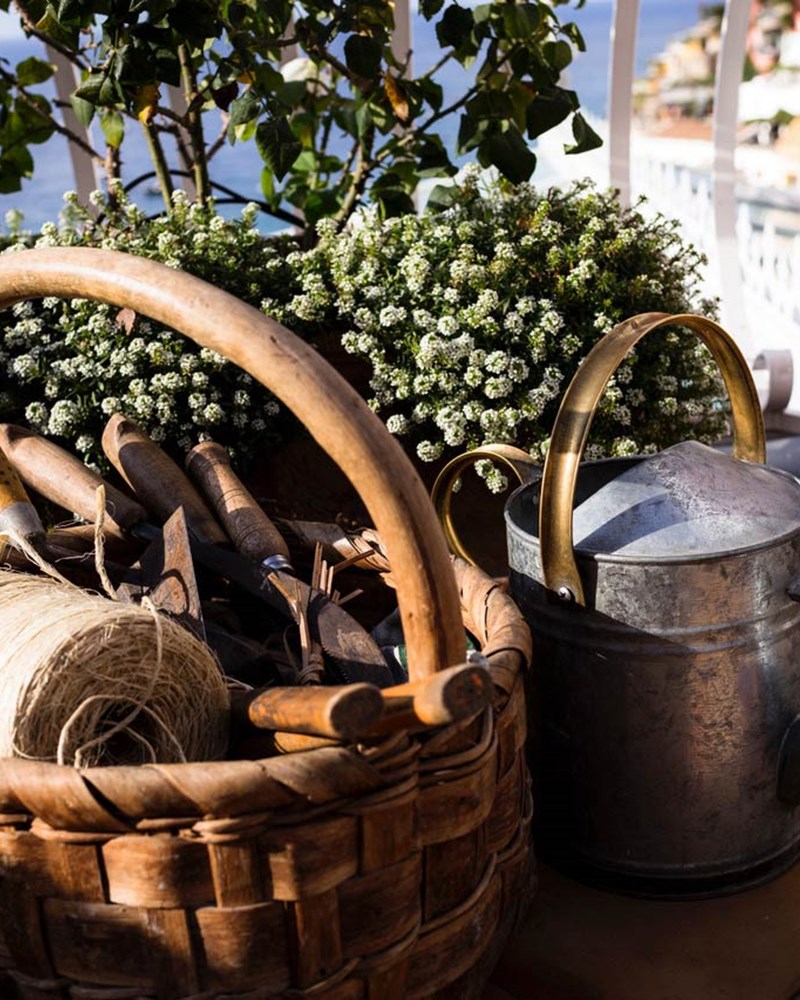
Guests interested in Le Sirenuse’s green world can sign up for a Hotel Flower Tour with gardener Peppe: tours take place on Mondays and Thursdays at 9am.
Photos © Roberto Salomone
Le Sirenuse Newsletter
Stay up to date
Sign up to our newsletter for regular updates on Amalfi Coast stories, events, recipes and glorious sunsets
